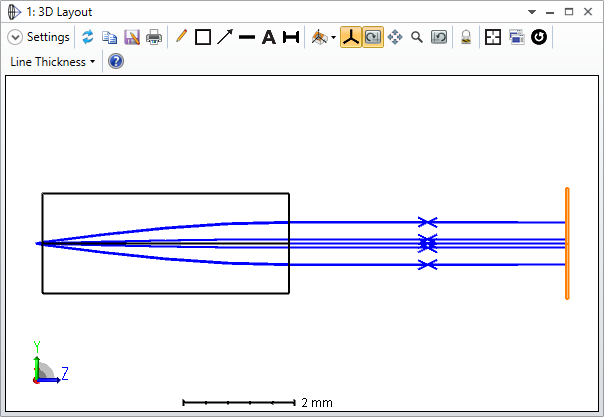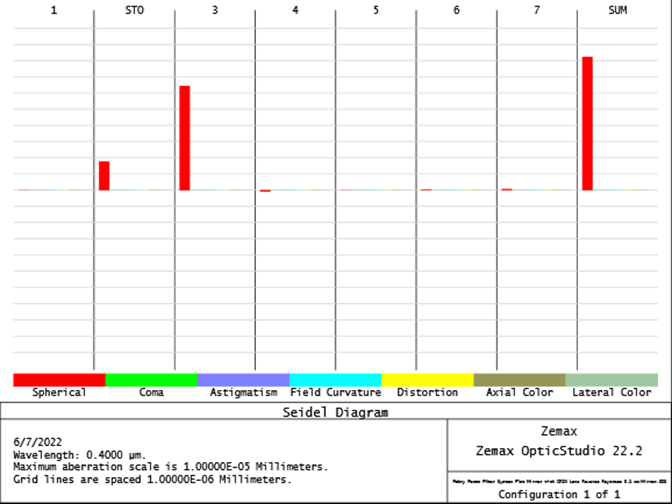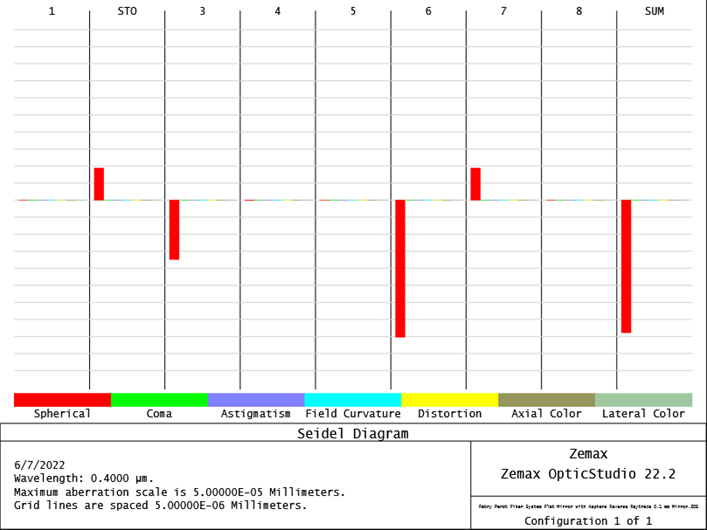Hello,
I am attempting to model a system that has 400 nm light emitting from a fiber, going through a lens, reaching a flat mirror, then retroreflecting back to the fiber. The scale of the system is on the order of a few mm. I am determining whether a GRIN lens or an asphere would work to have a small footprint back at the fiber while having minimal spherical aberration. I am currently modeling the system in sequential mode to keep the model as straightforward as possible until more complexity is required. However, when I am attempting to determine the aberration and footprint properties of the GRIN lens, I get the error message that double pass does not work for gradient surfaces like the GRIN lens I am testing. Is there a work-around to get the GRIN lens modeled properly with a double pass system? I can provide more information/context if needed. I would greatly appreciate any assistance.











